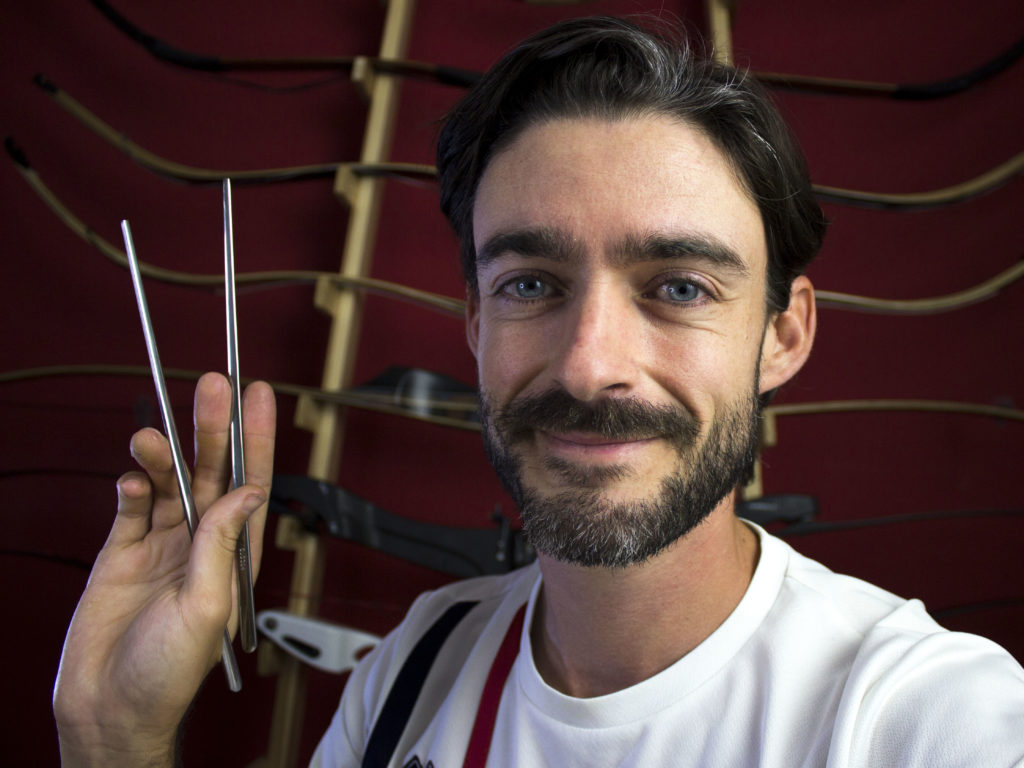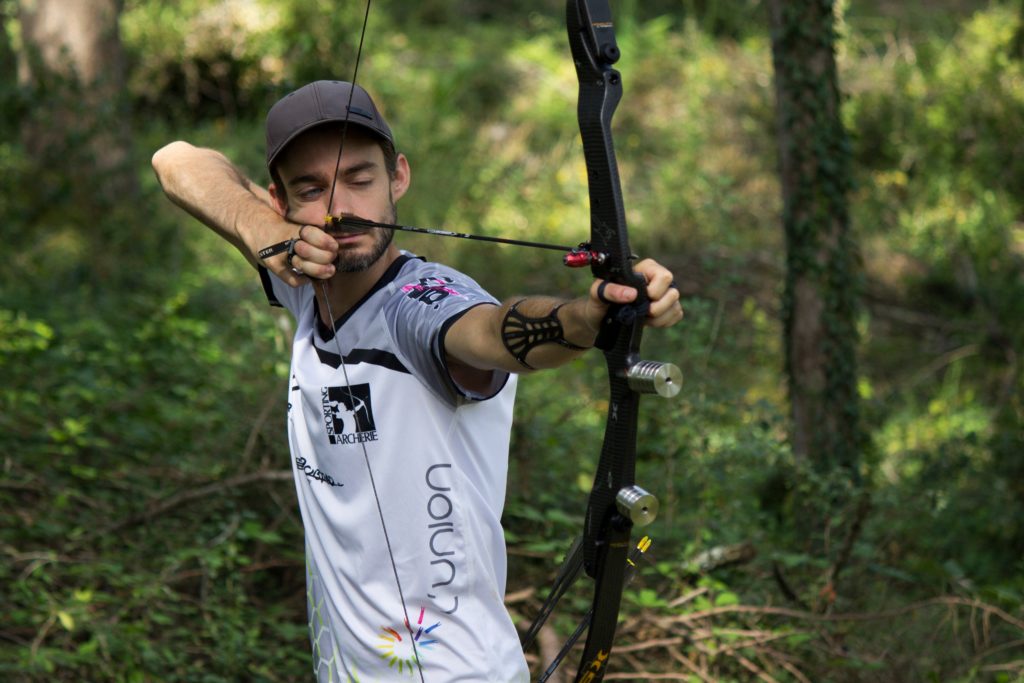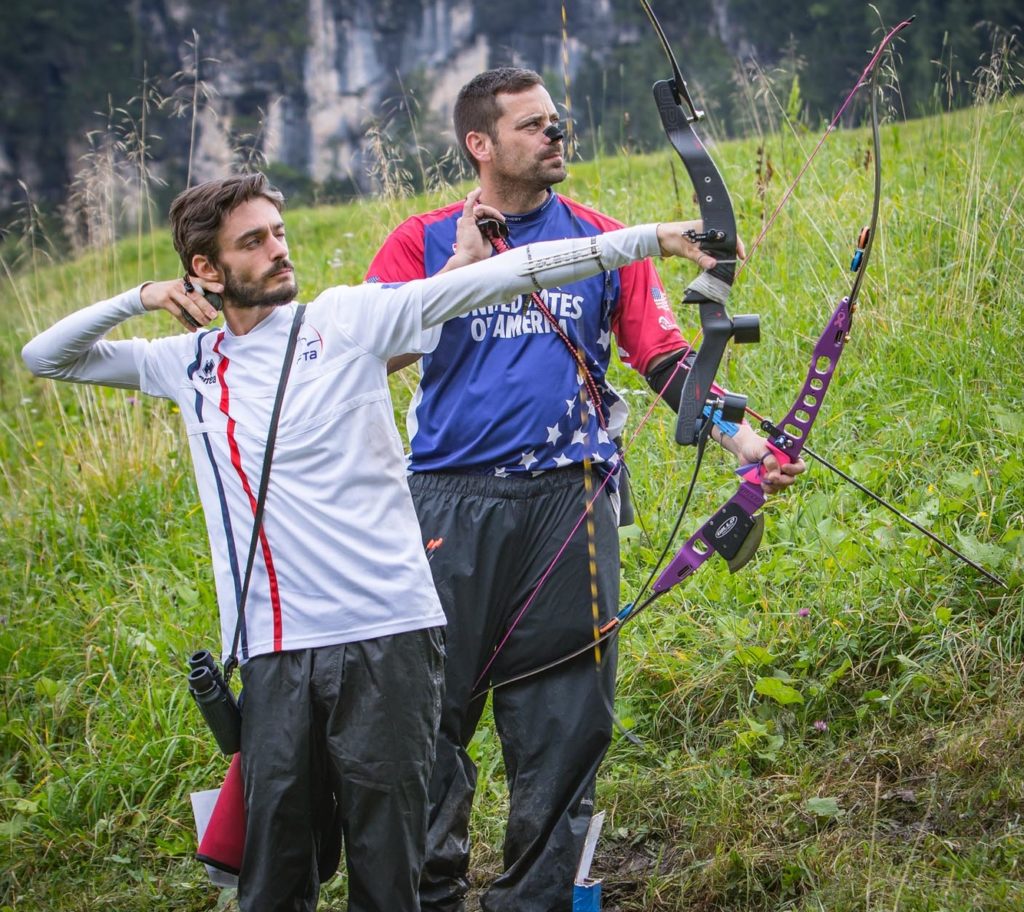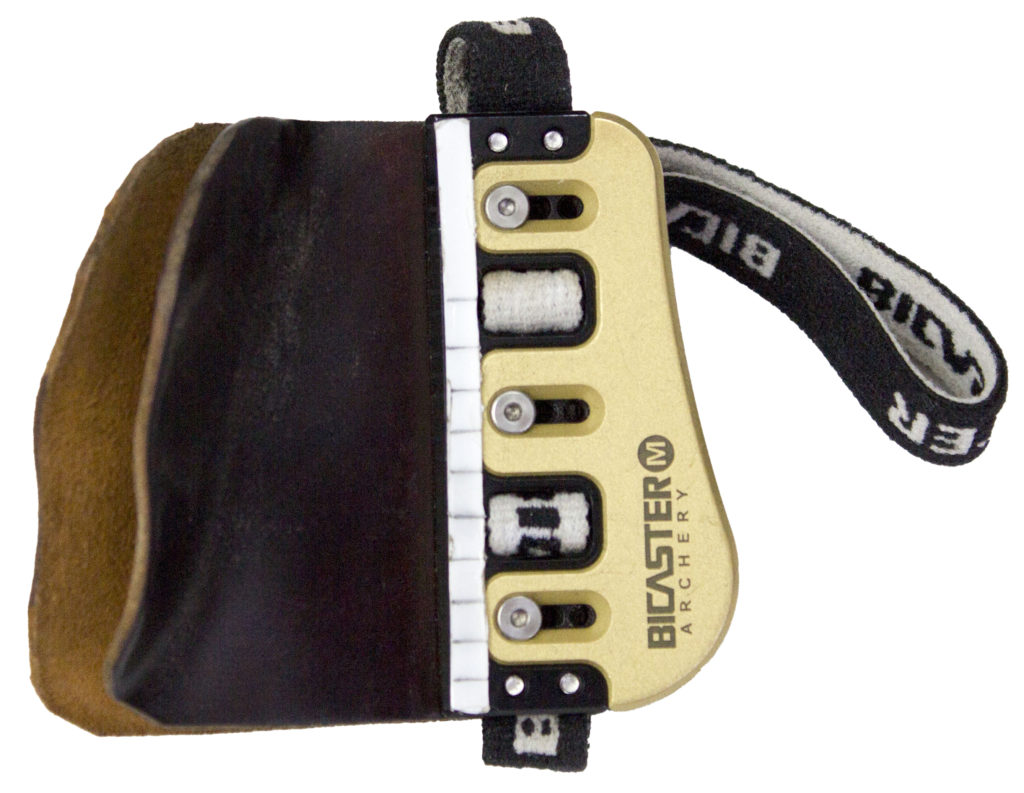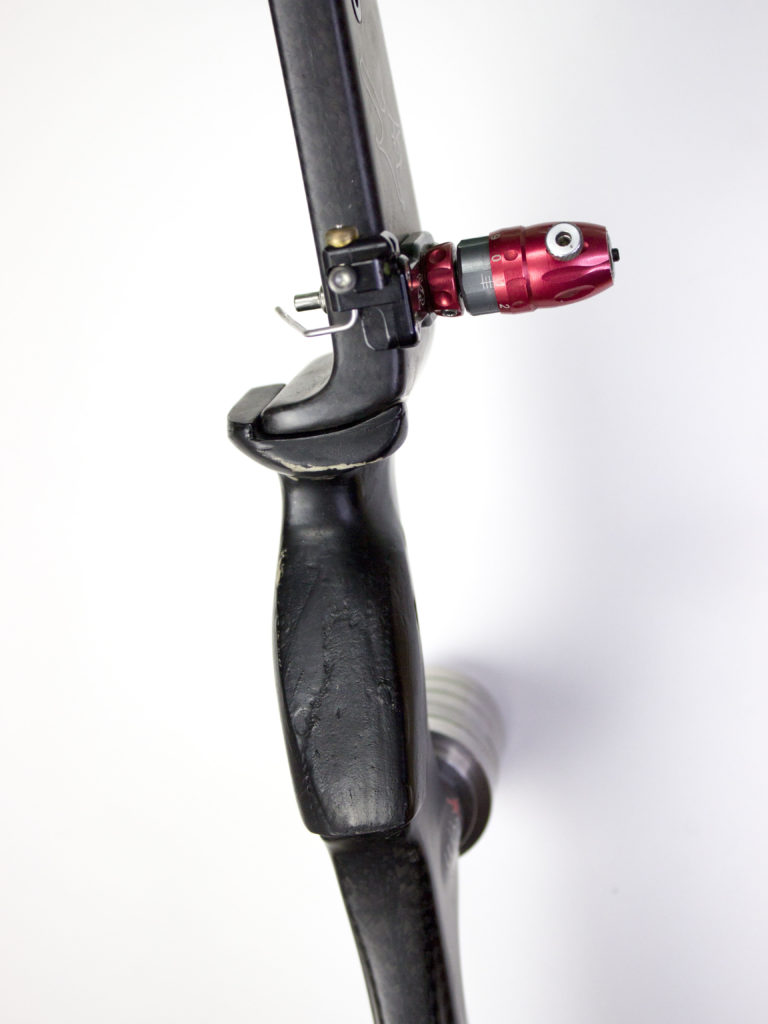The French international barebower and field specialist on going for gold. By Kristina Dolgilevica
How did you first get into barebow archery?
It started as a hobby in 2005 when I was 13 years old. I enjoyed historical and fantasy movies and books, which is what got me into the world of archery. I used to play basketball but I had to stop because I was growing too fast, my knees were hurting, so I had to find something more static.
At the start, I shot a beginner’s Olympic recurve bow without a clicker but did not do any competitions. After five years, I had got quite bored until one day I took part in an annual field competition organised by my club. I was in a team with a guy who shot barebow.
It was the first time I had ever seen somebody shoot like that – I didn’t even know you could shoot without a sight in a competition. This inspired me and I was hooked, I’d found the purpose for my training. The day after that competition, I removed everything from my bow and had lots of fun. Next thing you know, I was doing Field competitions and ended up being selected for the French Championships, which I won. That got me very motivated for what was to come next.
How do you prepare for a big event? Do you follow a special training programme?
I have no specific programme. I used to train based on how I felt. I shot most days. If I got tired, I didn’t shoot much, if I felt good, I shot for a few hours. But right now, I am trying to do things more seriously, because I have started to work as an archery coach.
I was completely self-taught, so I had no idea on what to do but, still, it kind of worked. I became a World champion like that. For next season I am trying to plan things a lot more and do things more like an athlete and not as a hobbyist. I have marked all the big events in red in my calendar – the biggest goals are the World Championships (Field, 3D) – 2022 will be a busy year.
Any additional prep?
Last year I wasn’t really doing anything additional but I realised it’s not enough. If I want to take it further, I need to be stronger to have control over my bow. I started following a short physical programme, doing bow drills and so on, and I’m building a small home gym.
What do you do differently from others?
I aim with the needle of my arrow rest. The alignment of my arrow is perfectly centred with my string and not ‘half point to the left’ like you usually see. That’s how I get my arrows to be in the right alignment at all distances.
What are you working on right now?
Right now, I am having a bit of fun with a longbow to change my mind, to recover from the European Championships, which were quite hard on me. I have also started to work on some of my barebow technique. I am working on my aiming and on what triggers my release, because that can be a big issue for me when I am under pressure.
I am currently shooting at a short distance to automate my process, I will then shoot more at a 40cm target. This month [December] I will start doing competitions again. Before that, I will do more scoring and match simulation, increasing the intensity of training. Then, whatever technical work I have done during the indoor season, I will put into the outdoor season and focus on performance.
Can you expand on what you mean by your ‘release trigger’?
What was initially triggering my release was the aiming picture. When the needle of my arrow rest would get into the gold, that’s when the release would happen. The issue is that it opens the door on the shot anticipation because I know when it is going to be on top of the gold.
Subconsciously, what my body tries to do is avoid getting that point into the middle, so I am fighting all the time to get it back in there. When there is additional pressure, it can get very difficult, especially if I have confidence deficit at that time. Now, it’s OK during training but still not perfect. I am trying to disassociate the release from aiming and I have been trying grip sear. It kind of works, but I have not yet figured out what works for me.
Grip sear is a hot topic among the barebow archers, isn’t it?
The most used technique is when you put your nail against your grip and ‘pull’ on it until it ‘pops’. For me, I could not make it work. I also tried to bend my finger, so that when the finger touches the grip, the release would happen. The hand can get very tense, the finger stops moving and you can end up having very long holds. The hand doesn’t feel good on the grip; I feel there is a bit of torque on release.
Do you have any pre-competition rituals?
When I go to international competitions I like to eat with Korean chopsticks. I look a bit silly. Before the competition, I wake up, take a cold shower, I don’t eat anything, just drink coffee perhaps and shoot on an empty stomach. If I have time to kill, I meditate or listen to music.
How do you deal with adversity? Tell us about a competition that didn’t go as planned.
This year we had two European Championships back to back: 3D and Field. The worst memory is from the Field event. The qualification round went OK, I finished in fourth place and managed to grab a place for the World Games. That was nice, but still I was fighting through every shot, trying to get my aiming right, so it felt like a big struggle.
We then got to the team matches, during which I completely lost it. We only shot one match, my recurve and compound teammates shot great but I could not let go a single arrow into the gold, it felt bad letting go. I made
my team lose. We lost by just one point, which was even worse.
A couple of hours later that same day, I had to shoot the mixed team event, so I went back to the training area and had a bit of help from the coaches – they helped me go back to my process. It was difficult, but I managed to leave what had happened earlier behind me. We went into the mixed team match against the two Swedish world champions, Erik Jonsson and Lina Bjorklund. I shot great, my partner shot great, and we ended up winning by quite a lot.
WHAT’S ON YOUR BOW: DAVID JACKSON
RISER: Uukha Xpro2, the lightest 27in riser on the market, weighing in at 1225g “Uukha were my first sponsors. They are a French company, so it felt natural to start there. Very good equipment, I have been with them for five years now, but I will be trying the latest Gillo, as I am quite curious about all the hype behind it.”
LIMBS: Uukha SX+, S-Curve profile. I shoot a 72in bow, poundage on the fingers is 39lb.
BUTTON: Prestige Micro Click by Arc Systeme (France) uses magnets instead of springs. “It is an interesting plunger and you can be very accurate in your tuning, and it is especially easy to adjust on the course. I have used the previous plunger by them, too, but before that it was Werner Beiter. A useful feature on the Arc Systeme is that you have gradation marks on the adjustable part of the button, visible to you. With Beiter these are not that visible, they are on the inside of the screw. “Colour is important to me. I need to have specific things of the same colour or it doesn’t shoot well. My plunger is red, my nocks are red and there is a little bit of red on the Uukha logo.”
WEIGHTS: By Avalon. “Now I have in between 800g and 900g. With the current riser I can only mount them on to the front, so some are placed closer to the middle of the riser and some more at the bottom.”
GRIP: “I use the standard Uukha grip, but I have remade it completely, using a file and grip putty. Mine is quite like how [Jake] Kaminski makes his, a very flat grip. I have put the putty where the web of the thumb goes, at the top of the grip, and I would say it makes a medium-low rise. I use no additional tape around it.”
STRING: BCY 8125, currently 20 strands. “For my poundage, the recommendation is 16 or 18, but I have not managed to tune my bow properly with the arrows I currently shoot. “My string is just one colour – black, same for the serving string, sometimes grey. I can see it well even if it is black on black.”
TAB: “The one I am currently shooting is made by a Chinese company, Bicaster Archery, very new. I just found it on Amazon and tried it. It’s a good tab, I was quite surprised. It has an elastic strap for three fingers. The only thing I did to it was cut the leather to my size. My previous tab was a regular Olympic recurve tab by Fivics that I have made into a barebow tab.”
ARROWS: DK Bow-Factory Gugnir arrows (Germany). Very light arrows, inner diameter of 4.2mm, consistent in spine and straightness: 006 for training, 001 for competitions. “I use 4in KSL Jet6 Vanes, the new shark profile, all in black – looks classy. Stringwalking is not good for arrow flight, so I like to put big vanes on mine; complemented by 100gr points and red or yellow Beiter Asymmetric nocks.”
ARROW REST: Arc Systeme CL10 (magnetic)
Equipment changes for indoor and outdoor: “I use the same set-up and arrows for both, only changing the points to a heavier 120g, which makes my indoor grouping better. “Every year my equipment changes quite a lot because I get new gear from Uukha. Four or five years ago I used to shoot about 45lb, but now I am down to 39lb because I realised that control is better than power.”


